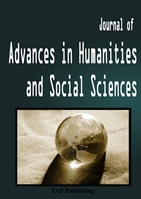
|
Published online: 2018
Abstract
This study analyzed the design-build programs promoted by the Association of Humanitarian Architecture (AHA) in Taiwan in the last four years using participant observation combined with secondary qualitative study and documentation. Then, it used the Collaborative Construction Model established in the previous research for comparison. The objective is to provide international organizations planning to enter Asia-Pacific for collaborative construction with a comprehensive recommendation. We found that the participants in the cases built explicit knowledge by reading the construction manuals and then gained tacit knowledge from the local professionals and vocational-school teachers within subdivided learning and processing lines. The outcome demonstrated that such an approach allowed the participants with different backgrounds to work together effectively and leveraged the smaller number of on-site professionals. By using the natives’ tacit knowledge about their environment and local materials for collaborative construction, the participants experienced unexpected results and joys. It is common for Austronesian and agricultural residents to have constructional skills as their second professional specialty. The use of local professionals’ tacit knowledge to guide the participants during construction led to increased self-confidence and honor in the local professionals. Besides, by combining traditional and modern constructional methods, the dependency on industrialized products in remote areas could be reduced instead of using the simple construction system utilized in urban areas. |